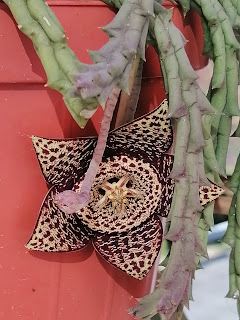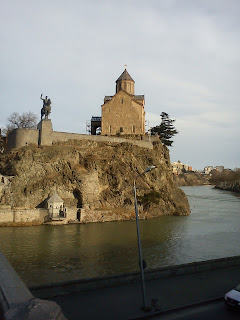Keys to a resilient tourism in times of troubles... BIG troubles!
In the years 2014-2015 a series of attacks of which with international visibility hit Tunisia. The terrorists deliberately made the tourism sector the target of their attacks, hitting two symbolic destinations in Tunisia: the Bardo museum and the beach of Sousse.
The Bardo represents one of the excellences of the country's cultural tourism. Located in the capital, Tunis, the museum is in the building of a Bey of the Ottoman Empire finely and effectively made museum, and houses unique pieces that attest to the great historical-archaeological heritage of the country, such as statues of pre-Roman gods, a wonderful collection of mosaics from the Roman Empire. The beach of Sousse as well is one of the many seaside tourism destinations in the country, perhaps not as famous as Gjerba, but still densely built up with hotels of international standing and with a climate that allows for an extension of the sun & sand season compared to other Mediterranean destinations.
The feeling after the two attacks, which occurred one after the other, was that the ferocious security crisis that had hit the tourism industry - 500,000 direct and indirect workers out of a population of 10,000,000 - would break the sector.
Tourism is a volatile industry, very reactive even to small episodes. Tourists can move by deciding among various destinations.
The destinations, on the other hand, do not move.
Tourism is a space-related industry; it only develops in one place as such. And, if that point is affected by a serious crisis, the entire sector stops.
In truth, the Tunisian case, but not only, shows that tourism is as volatile as it is resilient. After a season of crisis with also the suspension of the cruise routes to North Africa-Maghreb, the tourists returned. This is a fact that must be understood and analyzed, to understand how to build resilience in the face of crises that - like that of North Africa - can be extended, concern cross-border macro-projects, and affect perceptions that alienate tourists in an absolute way, not only reduce the days of stay.
Who are the tourists who return and why do they return?
The profile of the tourist who is least frightened in time of crisis is that of the lone traveler, or of groups of young people. Families are much more cautious, and in general, those who bring minors are understandably more careful to avoid problematic situations.
Moreover, there are two fundamental elements that guarantee the loyalty of a tourist: property rights and personal bonds.
Return tourism is a huge resource that must be continuously cultivated. Tourism marketing always tries to reach new markets and although this makes sense and it indeed the core of marketing, returning tourists represent a greater vector of resilience, not only in the event of a crisis, but even during a disaster like the pandemics.
This is what happened in Tunisia as well as in Southeast Asia after the great Tsunami of 2004. Those who had ownership or even co-ownership returned. This is not only to enjoy a property for which an investment has been made, but because beyond the alarmism and sensationalism that accompanies an event, those who know the area better tend to be less afraid.
Those who frequent a destination often know how to read the images they see and interpret the names and circumstances related to places, so they tend to be able to give an evaluation less conditioned by the sensationalism of the media.
Those who knew Tunisia knew that Sousse is Sousse, and a circumscribed episode on a beach frequented by foreigners could have a zero impact on lesser known, more pioneering and areas more frequented by Tunisians and by expert connoisseurs of the country. Knowledge allows us not to generalize, to give a more measured evaluation and to possibly know how to circumscribe (geographically, too) the episode. Credit must be given to the capacity of the Tunisian governments to protect the tourism sector, which had been carefully preserved through a coup, a color revolution, and other minor security incidents. Likewise, frequent travelers in the areas affected by the tsunami were able to assess the long-term impact on the infrastructures necessary for their stay and therefore on the feasibility of a return within a reasonable number of months more than those who do not know the area.
Finally yet importantly, tourists go back to where they have friends. Even more so in a critical phase friends share unshakable bonds.
A welcoming host community, open to creating links with tourists is a guarantee not only of sustainable tourism, but also of resilience. At the peak of terrorism, the numerous Italians who regularly visit Tunisia, who find themselves somewhere between tourism, work, and semi-domicile, were able through their personal contacts to receive a counter-narrative on the level of danger of the state of emergency compared to the one on the media news. This enabled them to know whether it was possible to move around the country, if there were any actual restrictions on the enjoyment of a tourist experience. The word of a friend is more believed - for better or for worse - than an official bulletin or even just an information from the Ministry of Foreign Affairs (which remain essential tools for those traveling for vacation, for work, for personal reasons).
The same goes now with the pandemics. Where I live, an outdoor and sea&sun destination, the first who returned, the very first tourists we saw after the very shocking first wave of Covid19, where old friends of the Riviera. Some of them have a second house here, some are almost yearly commuters. None of them would have skipped a holiday here, they know the place, feel confident about moving around, know what places to avoid to feel safe and where to go if they want to avoid crowded places.
For once, during this crisis, tourists are more prone to avoid surprises and adventures, and they are more likely to go to familiar areas, and faces, once more.



Commenti
Posta un commento